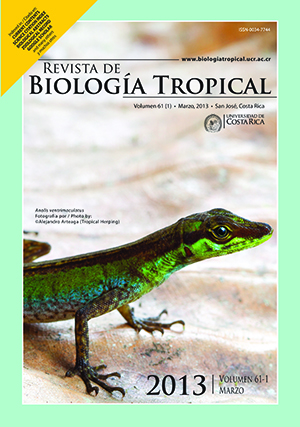Abstract
Polylepis cuadrijuga is an endemic woody species from the Colombian Eastern range, being the only tree species with capacity to live on mountainous environments beyond 4 000m of altitude. Grazing and agriculture have transformed at least 30% of the Guantiva-La Rusia region, turning continuous extensions of high Andean forest in a fragmented landscape, and P. cuadrijuga remnants have become smaller and more isolated. The aim of this study was to establish the environmental differences between a matrix of grazing pastures and the interior of fragments, to evaluate the physiological responses of P. cuadrijuga and determining the edge effect. Air temperature and humidity, soil water holding capacity and photosynthetic active radiation, were measured along two 50X2m transects from the matrix toward the center of fragment. Six trees inside the transects were chosen in each one of three sites (matrix, edge and interior) to measure the index chlorophyll content and to sample leaves to assess the leaf area, leaf biomass, specific leaf area, anatomy, health condition and pubescence. Results showed significantly differences between the matrix and the interior and intermediate conditions in the edge. Radiation, temperature and air desiccation were higher in the matrix than in the interior, submitting P. cuadrijuga trees to a stressing environment, where they presented stratification of epidermis and palisade parenchyma, and a higher leaf area, leaf thickness, chlorophyll content and pubescence than in the interior of fragments. All these physiological traits allow avoiding the photoxidation and damages by freezing or desiccation to which trees are exposed in a grazing pasture matrix. Nevertheless, there was a higher frequency of healthy leaves in the interior of fragments, showing that high irradiations and extreme air temperature and humidity reach adversely affect to P. cuadrijuga. Individuals in the edge had ecophysiological traits similar to the matrix ones, which confirm an edge effect that could penetrate 17m inside the fragments. We conclude that P. cuadrijuga is a plastic species, able to overcome the stress conditions from anthropogenic transformations, species able to be used in high Andean forest restoration programs.##plugins.facebook.comentarios##
Downloads
Download data is not yet available.






